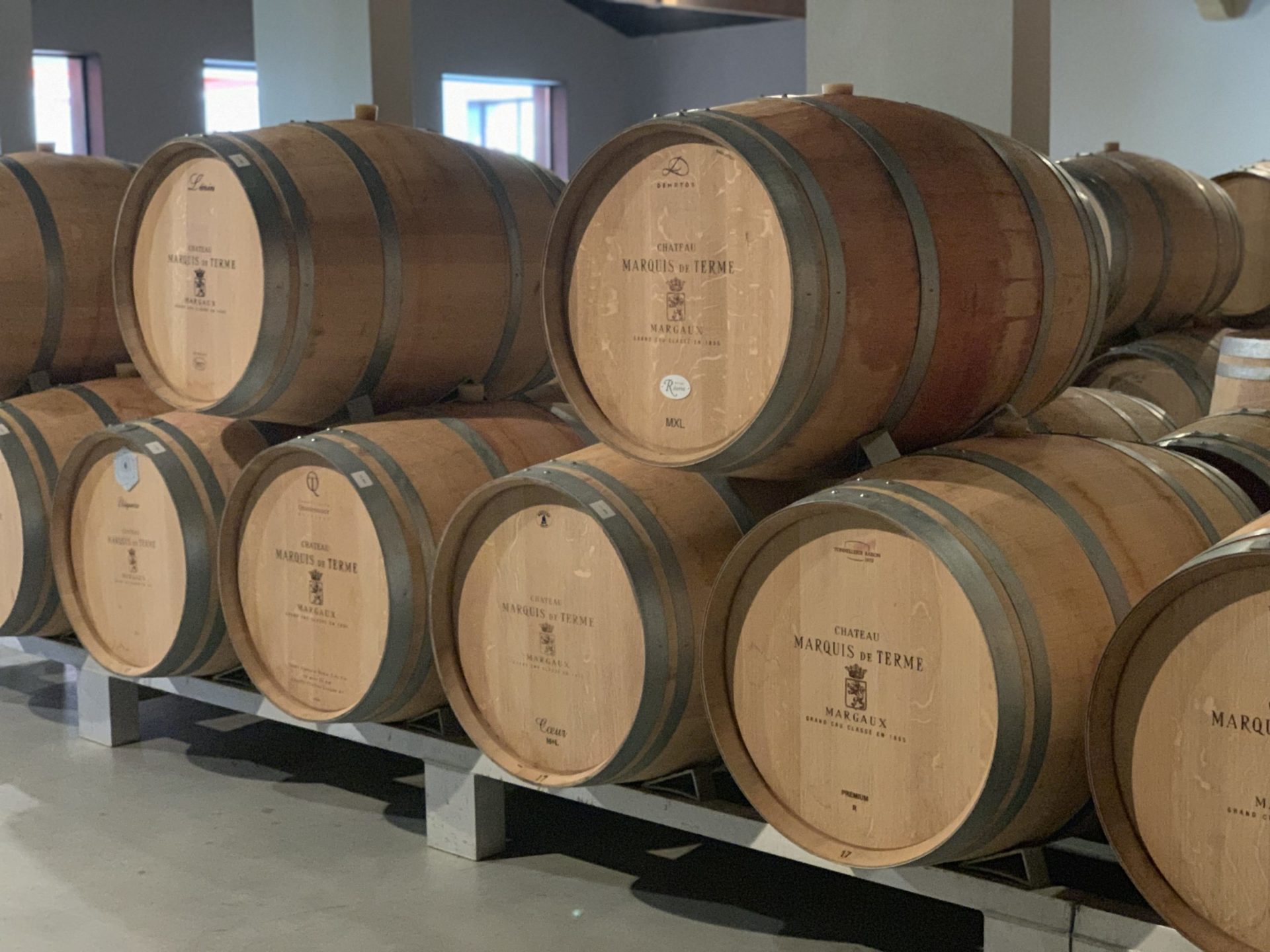The winemaking process entails lots of different steps and each of them is considered equally important. However, two of these transform grape juice into what we all know as wine: fermentation and ageing. These two steps are responsible for contributing to the style of the wine and the vessel they take place is of great importance. Let’s take a deeper look at all of them.
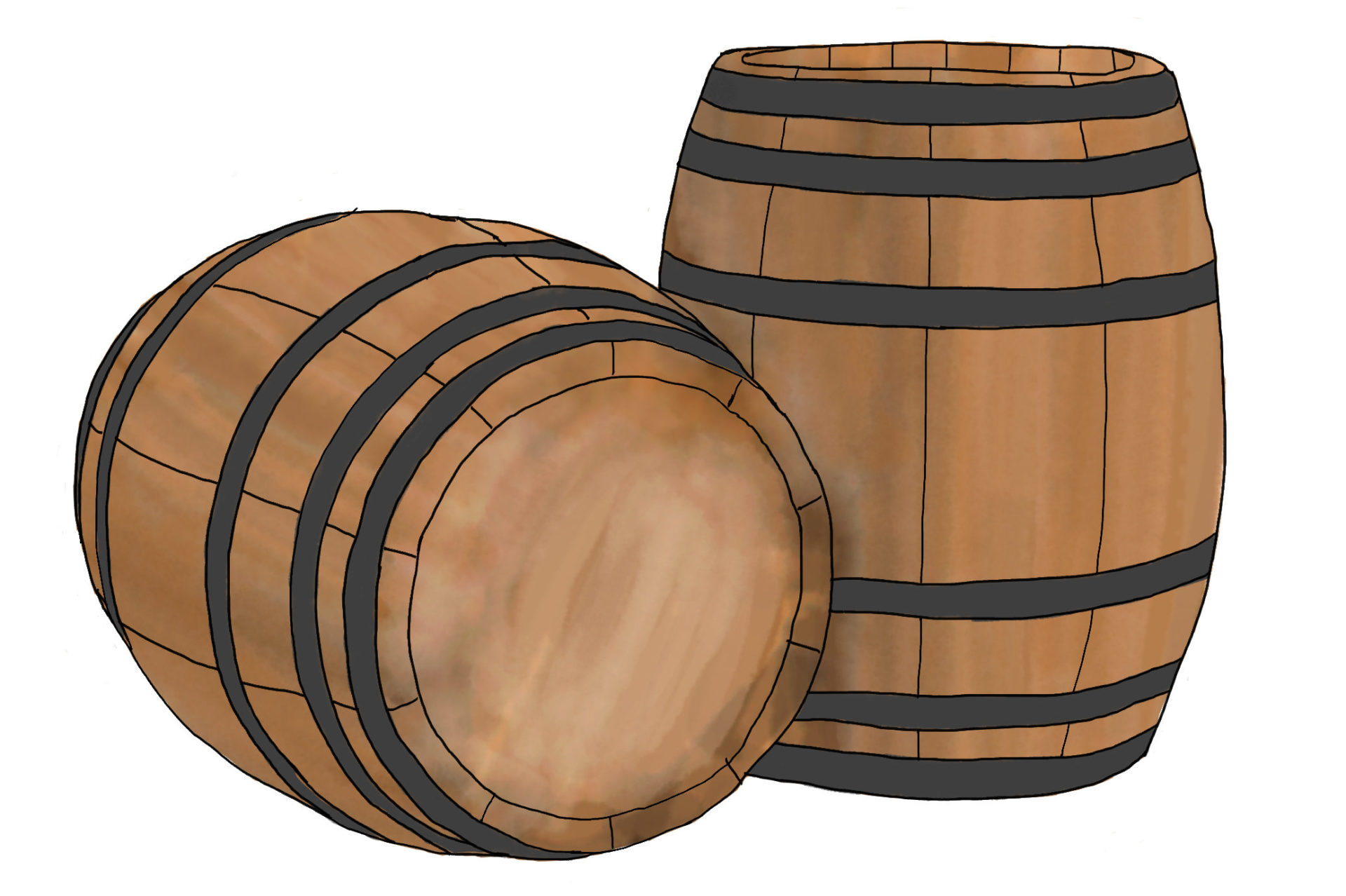
Oak barrels
When you think of wine resting in a winery you’re probably picturing oak barrels. Over the centuries, the most common vessel to ferment, age and store wine has been the wooden barrel. Over this period of time winemakers have learnt that different types of wood and the size of the barrel make a difference to the final wine.
The main things to consider when using wood barrels are the type of wood, whether the barrel is new or used, the size of the barrel, and the degree of toastiness.
The most common wood used to produce barrels is oak and the two most well-known types are the French and American species, although there are others. These two differ in the size of their pores which affects the amount of oxygen they allow in. This factor also defines how much of its flavours get mixed with the wine. French oak has smaller pores than American and that means that the secondary flavours of oak tend to be more subtle in the wine.
Oak barrels have a lifespan of three years before turning neutral and stopping imparting any flavours to the wine. New oak barrels are extremely expensive and that in turn increases the price of the wine.
Size really does matter when it comes to wooden barrels. A smaller barrel means there’s a larger proportion of oak compared to wine which translates into a wine that ages faster and takes on more oaky flavours. The standard barrel size in Bordeaux is 225 litres whilst Burgundy is 228 litres.
Barrels are also subject to a process of toasting which increases the intensity of flavours by caramelising the sugars present in the wood. The toastiness of barrels varies greatly.
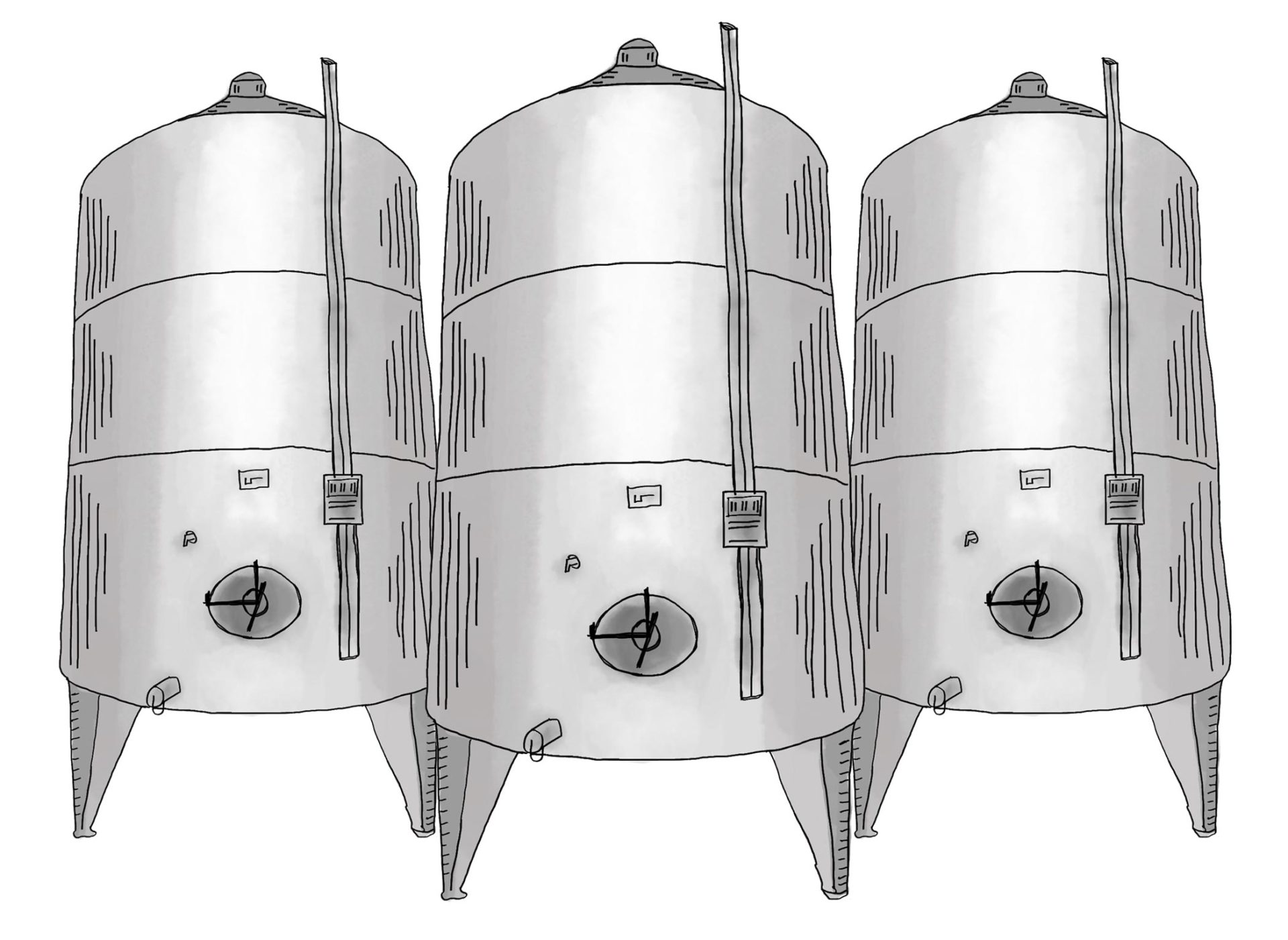
Stainless steel vats
Advances in technology made this type of vessel possible in the 1950s and have evolved through continuous improvement ever since. They’re now probably the most common type of vessel today and come with many advantages.
They can store large quantities of wine, they’re cheaper than oak, they’re very hygienic, and can be cleaned very easily. Their internal temperature can be controlled using thermostats, and don’t allow contact with oxygen which maintains freshness. This is especially important in aromatic varieties of wine such as Sauvignon Blanc, Riesling or Bacchus.
Because stainless steel is a neutral material it doesn’t impart any flavours and for this reason, it’s said that wines fermented and aged in them show the true aromatics and purity of the grape variety.
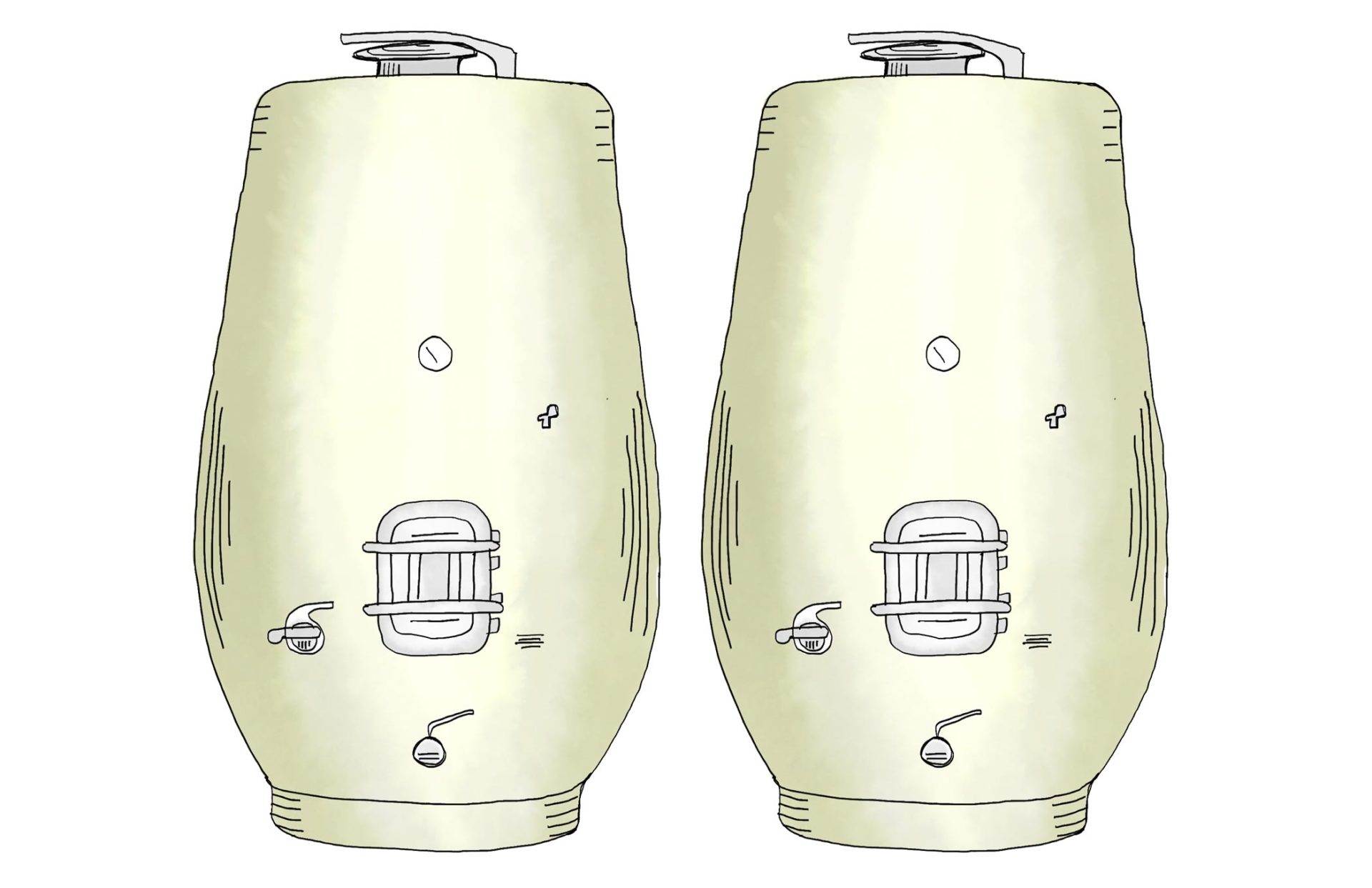
Concrete vats
Concrete vats or tanks came before stainless steel but fell out of fashion in favour of the latter. In the last 10 years or so though they made a comeback due to some advantages that weren’t taken into account back then.
Similarly to stainless steel, concrete is a neutral vessel and doesn’t add any flavours to the wine but the main difference lies in that it’s a porous material and allows oxygen to go through it. The porosity is similar to that of oak and this microoxygenation helps soften and mellow the wine in a similar way but without adding any extra flavours.
These tanks are a cost-friendly option and are also easy to clean. At the same time, they’re eco-friendly as they don’t use any energy, unlike stainless steel vats which use thermostats to control their temperature. Concrete is a good material when it comes to absorbing heat and then dissipating it slowly across its surface.
Concrete tanks come in different shapes and sizes too the most popular being the egg. The main characteristic of vats with this shape is that they facilitate convection currents during fermentation helping even out the temperature inside and mixing the dead yeast (lees) without the need to manually do it.
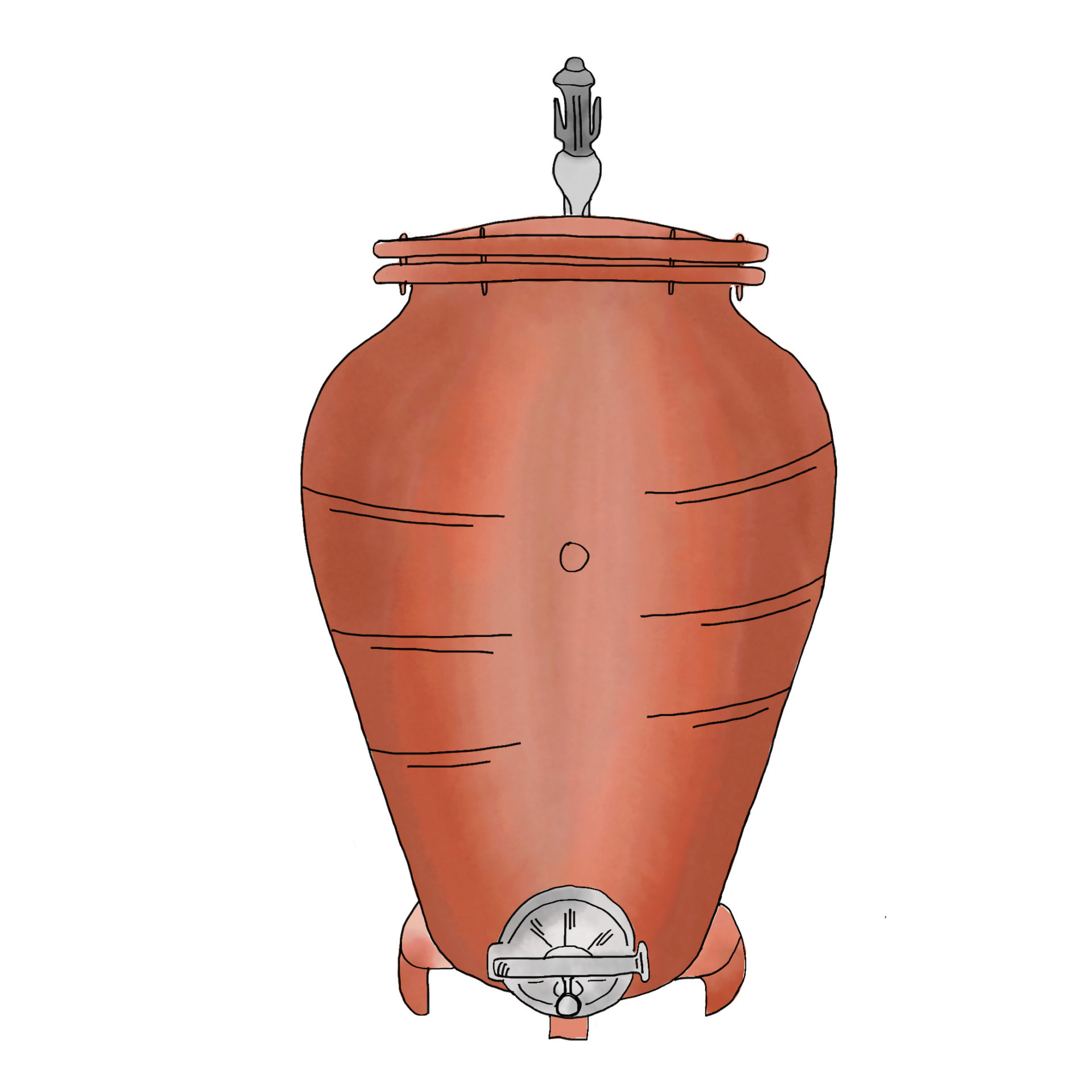
Clay amphorae
This form of vessel is the oldest known and has been used to ferment, keep and transport wine since before Roman times.
The use of these vessels was almost discontinued with the exception of small pockets in the ‘old wine world’ such as Georgia where it has always been the traditional way to ferment and age wine for some 6,000 years.
The comeback of clay amphorae was thanks almost entirely to the hands-off approach of natural winemaking. Clay, in a similar way to concrete, is great at absorbing and dissipating heat and because it’s a porous material it allows microoxygenation to take place. All of these characteristics help stabilise the wine, which in turn, then has little or no need for sulphur to be added to it which is one of the cornerstones of natural winemaking.
Clay is also a neutral material and doesn’t impart any flavours to the wine. The amphora’s shape resembles that of an egg (the same as a concrete tank) and because of this, it allows convection currents inside them which brings all the benefits that were described above.
In conclusion
Winemakers may choose to use more than one of the above vessels to ferment and age their wines. They could choose to ferment different varieties in different containers, and then blend and age the resulting wine in another. The options are really vast and leave a lot of room for experimentation.
